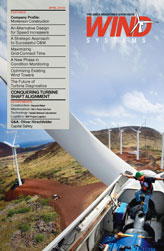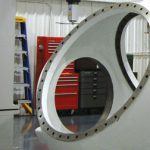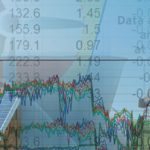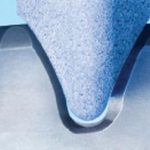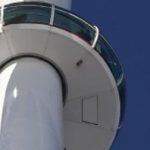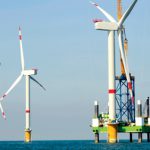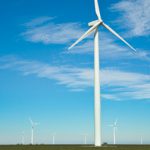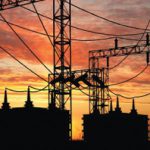With another record year to the industry’s credit, wind energy deployment both worldwide and in the United States continues to show the effectiveness of policies and incentives coupled with a clean, affordable, and reliable energy supply. By the end of 2009 some 9,922 MW had been installed in the U.S. alone, for a cumulative amount of nearly 35,000 MWs. For the first time wind energy was tied with natural gas on annual installations, representing approximately 2 percent of our energy consumption. It is important to recognize that effective programs triggered by the American Recovery and Reinvestment Act (ARRA), such as loan guarantees and incentive options, played a key role in the large installation numbers during the recent economic downturn.
There are many existing and ongoing studies targeted at evaluating and calculating the feasibility of large penetrations of renewable in the future energy mix, with all studies showing that wind energy will represent a significant percentage of the clean energy portfolio. Additionally, with current administration goals—which aggressively suggest up to 10 percent renewable energy by 2012, and 25 percent by 2025—it is important to understand that in addition to clean technology viability and feasibility, a robust supply chain and manufacturing sector is imperative in meeting these goals.
With no offshore wind installations, land based utility-scale machines range from 1 to 2.5 MWs. These machines are typically installed on a 60 to 80-plus meter towers and have rotor diameters that can range between 60 and 100 meters, depending on the turbine rating and the wind speed class of the site. Manufacturers offer the same basic-rated machine with different rotor diameters and tower heights to accommodate the certified resource characterization of the specific site. These options are targeted at delivering a turbine that balances both energy capture and reliability in order to ensure cost-effective energy production over the designed lifetime, which is typically 20 years.
The manufacturing capacity of the components needed to support these large machines must have the needed flexibility to support the various options offered by the manufacturers. Unlike other key components such as generators and gearboxes, wind blades can require plant modularity, given the size of the articles and the capital intensive molds that must be available to support projected orders.
Focusing on 2009, when nearly 10GW were installed, the raw materials that were needed to manufacture the diverse set of components can sometimes strain the system and obligate manufacturers to lock in large amounts of supply (~175M lbs of fiberglass). This favors large manufacturers, of course, who have both the capital backing and reputation to be able to lock in both prices and large quantities of materials or components.
Independent of supply, the economic downturn has increased the focus on reliability. Companies and research institutions focus on technology improvements that not only improve the efficiency of the machine, but also focus on improving the reliability and availability of the asset. As the industry has matured over the past 30-plus years, both the technology and methodology used to design and evaluate components has increased substantially, but the materials and manufacturing processes have improved as well.
As an example, several manufacturers have developed blade designs that require carbon fiber for lightweight and stiffness constraints, while others continue to use lower-cost fiberglass given experience and manufacturing infrastructure. Although both methodologies have proven to be successful, balancing the economic benefit of the innovations while preserving or enhancing reliability will be the innovation filter for years to come.
There is an immense set of technology options that can potentially improve wind systems such as condition health monitoring systems, distributed sensor networks, and advance materials options such as nano particles to strengthen local areas, etc., but evaluating and balancing these technologies on an economic basis is key. It is difficult to predict what the next generation of technologies will bring to this industry, but we can be certain that as it continues to mature and leverage technologies from other sectors the resulting turbines will be smarter, more efficient, and they will represent a significant percentage of our energy mix.



















